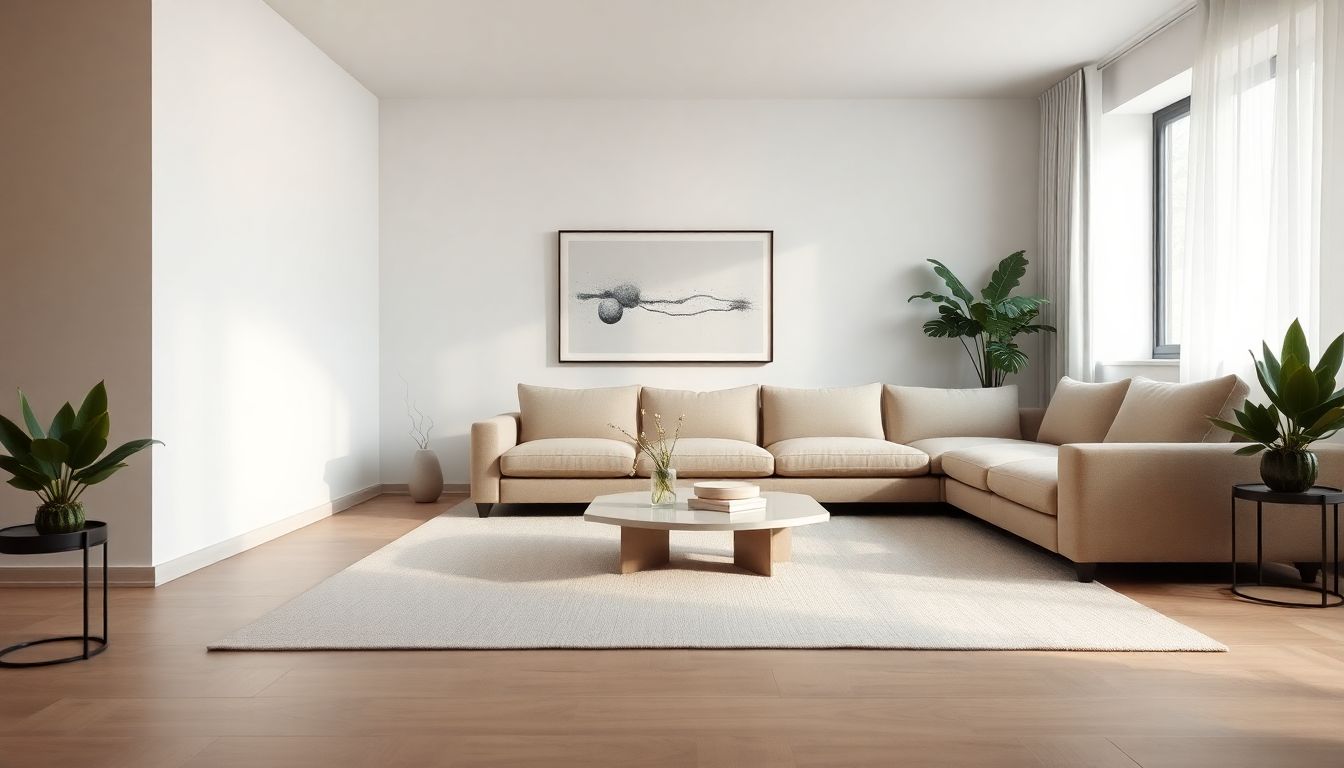
Imagine a home where every object has a purpose, where peace prevails, and stress fades away. That’s the promise of minimalist decor. It’s more than a style—it’s a way to simplify life and create spaces that boost well-being.
Some think minimalism means dull or lifeless, but that couldn’t be further from the truth. In this complete guide, we’ll show you how to craft a beautiful, functional, and welcoming space with minimalist principles. Get ready for practical tips and plenty of inspiration to transform your home with minimalist decor!
What Is Minimalist Decor?
Minimalist decor is an interior design approach that prioritizes essentials, eliminates excess, and values quality over quantity. It rests on three core pillars: functionality, simplicity, and intention.
Rather than hoarding objects, minimalism encourages careful curation of items that truly add value to your life. Every element in the space should have a clear purpose or spark genuine joy.
This design philosophy emerged in the late 1960s as a reaction to the excess and opulence of earlier styles. Inspired by traditional Japanese architecture and the minimalist art movement, this approach celebrates open spaces, clean lines, and the absence of unnecessary clutter.
The key difference between minimalism and styles like maximalism is clear: while maximalism revels in abundance and bold expression, minimalist decor seeks essence and tranquility through reduction.
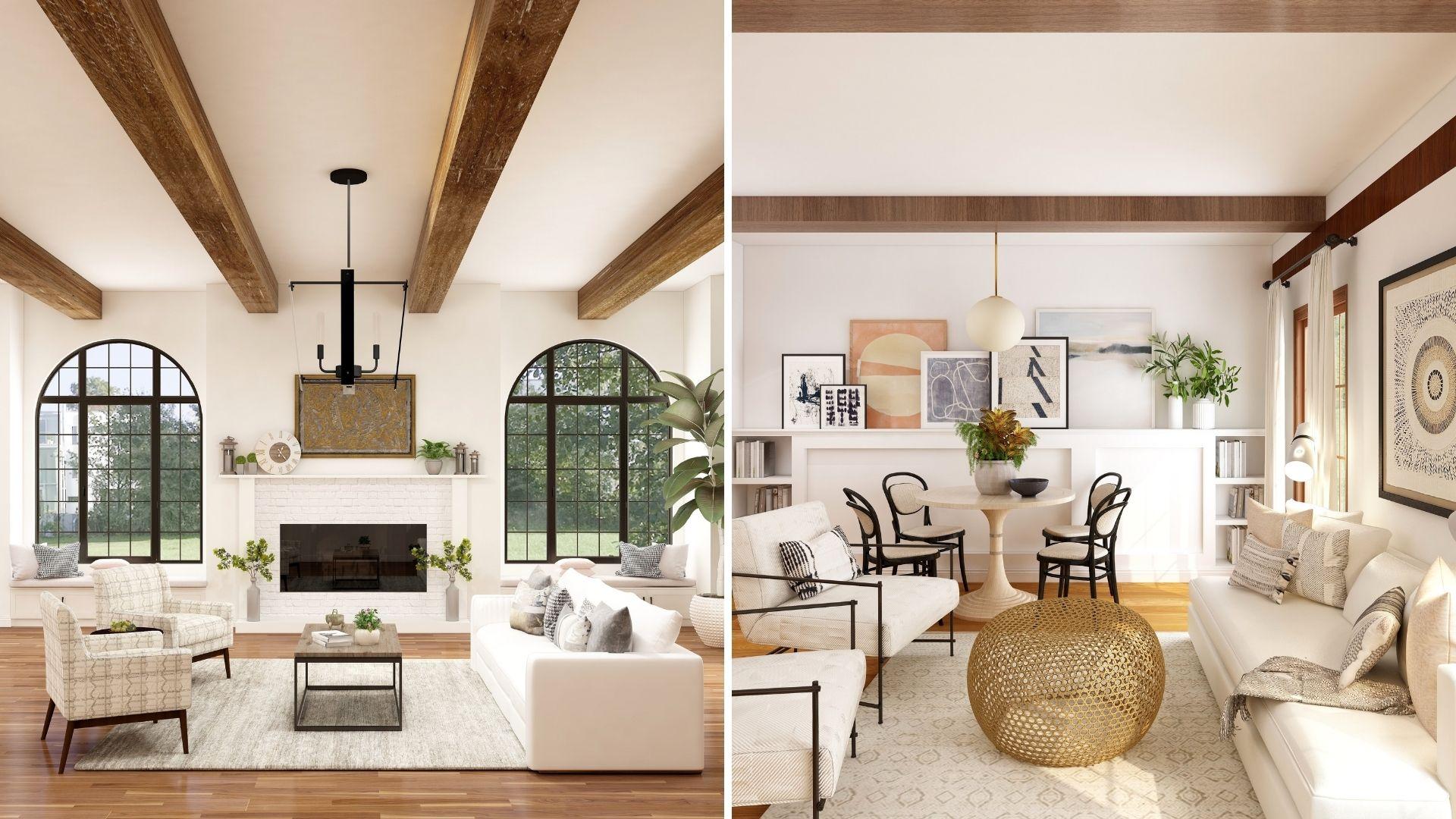
The Core Principles of Minimalism
Minimalist decor relies on essential principles that guide every design decision. Understanding these foundations is the first step to creating a truly minimalist space:
1. Less Is More
This iconic phrase from architect Ludwig Mies van der Rohe sums up minimalism perfectly. Every item in your home should have a clear purpose or special meaning. Question the necessity of each object before keeping it.
2. Quality Over Quantity
It’s better to own a few high-quality items than a pile of cheap, disposable ones. Invest in durable, timeless pieces built to last.
3. Neutral Color Palette
Colors like white, beige, gray, and black form the backbone of minimalist decor. These neutral tones foster calm and visually expand spaces. Subtle pops of color can come from specific items.
4. Empty Space Matters
In minimalist design, “negative space” (empty areas) is as vital as objects. These gaps let the room “breathe,” creating a sense of calm and order.
5. Function First
Every element must be functional. Multi-purpose furniture and smart storage solutions keep things organized without sacrificing comfort.
6. Subtle Textures
To keep the space from feeling flat or cold, minimalist decor uses natural textures like wood, linen, cotton, and stone, adding depth and visual interest without clutter.
Minimalist Decor vs. Other Styles
Minimalist decor shares traits with other design trends but maintains a unique identity. Knowing these differences can help you choose the right path for your interior design:
| Style | Main Features | How It Differs from Minimalism |
|---|---|---|
| Minimalism | Simplicity, open spaces, neutral colors, few items | Focus on reduction and essence |
| Scandinavian | Brightness, functionality, light woods, coziness | Warmer and cozier, with more textures and decor |
| Modern | Straight lines, metal and glass, geometric shapes | More industrial and tech-focused |
| Contemporary | Current trends, mixed styles, flexibility | More eclectic and trend-driven |
| Japanese | Harmony, balance, natural materials, simplicity | Rooted in specific cultural traditions |
Minimalism zeroes in on essence and cutting excess, while Scandinavian style adds warmth with wood and natural textures. Modern design leans on straight lines and industrial materials like metal and glass. Contemporary evolves with trends, blending styles dynamically.
5 Proven Benefits of Embracing Minimalist Decor
Living with minimalist decor offers benefits beyond aesthetics. Research and expert insights confirm its positive impact on well-being:
1. Reduced Stress and Enhanced Mental Clarity
A clutter-free space significantly lowers stress. A study in the Journal of Environmental Psychology found that people who describe their homes as “cluttered” or “disorganized” have higher cortisol levels, the stress hormone.
Surrounding yourself only with items you love or need frees your mind to focus on what matters. This sense of control over your space promotes calm and mental peace.

Practical Tip: Start by removing 10 unused or unloved items daily. In a month, you’ll clear out 300 unnecessary objects!
2. Boosted Productivity and Focus
A minimalist workspace sharpens focus and productivity. Princeton University researchers found that visual clutter competes for attention, reducing concentration and information processing.
Fewer distractions mean better task focus. Professional organizers say a tidy workspace can boost productivity by up to 30%.
Practical Tip: Keep only essentials on your desk. Use vertical organizers for papers and manage cables with clips or sleeves.
3. Time and Money Savings
Adopting a minimalist decor lifestyle means buying less and valuing what you own, leading to long-term savings.
Fewer items also cut time spent cleaning, organizing, or searching for lost things. The average person spends about 2.5 days a year looking for misplaced items!
4. Sustainability and Environmental Awareness
Minimalist decor naturally lowers your environmental footprint. Buying less and choosing durable items reduces resource use and waste.
Many who embrace minimalist decor also opt for sustainable products made from natural materials and eco-friendly processes.
5. Better Sleep Quality
A minimalist bedroom, free of distractions and visual noise, can improve sleep. Sleep experts recommend calm, organized spaces for relaxation before bed.
The National Sleep Foundation confirms that a clean, tidy bedroom supports deeper, less interrupted sleep.
Key Elements of Minimalist Decor
Minimalist decor builds on specific components that create a harmonious, balanced space. Choosing these elements carefully is key to a successful design:
Color Palettes: Neutral and Natural Tones
Neutral colors are the foundation of minimalist decor. White, off-white, beige, gray, and black create a calm, elegant backdrop for a few chosen pieces.
To avoid monotony, play with shades of these neutrals and add one or two subtle color accents via art or plants. Natural materials like wood, stone, linen, and cotton bring texture and warmth, balancing the simplicity.
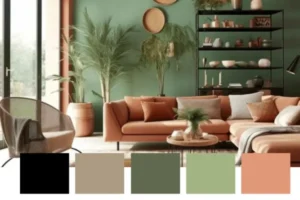
Furniture Selection: Functionality and Simplicity
Choose functional, simple, high-quality furniture. Opt for pieces with clean lines and geometric shapes, free of ornate details. Each item should serve a purpose and take up only necessary space.
Durable materials like solid wood, metal, and glass ensure longevity, aligning with the minimalist focus on quality over quantity.
Consider multi-functional furniture—like sofa beds, extendable tables, or beds with storage—to maximize space, especially in smaller homes.
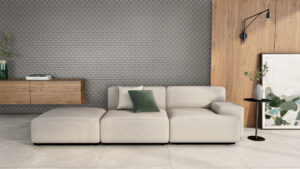
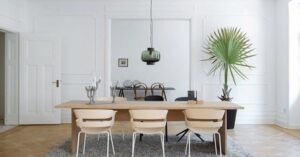
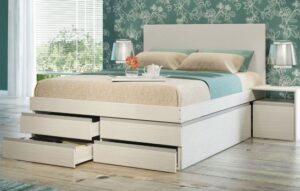
Accessories: Intentional and Meaningful
In minimalist decor, less is more with accessories. Use a few items that are special to you and enhance the space aesthetically.
A single striking artwork can outshine multiple smaller pieces. Plants are also perfect, adding life and natural color without clutter.
Avoid piling up decor without purpose. Each item should be chosen intentionally for meaning or function, complementing—not overwhelming—the space.
Minimalist Decor by Room: A Practical Guide
Let’s see how to apply minimalist principles to each room in your home with practical tips and inspiring examples:
Living Room: Crafting a Calm Oasis
The living room is often the heart of the home and where guests gather. Minimalist decor here creates a serene, organized first impression.
Practical Tips:
- Choose a comfy sofa with simple lines in a neutral tone.
- Pick a functional coffee table without excessive details.
- Use a TV stand or shelf with closed storage to hide electronics and cords.
- Maximize natural light with sheer, light curtains.
- Add 2-3 pillows in complementary colors or textures.
- Include one or two plants for a touch of life.
- Select a meaningful artwork as a focal point.

Expert Tip: “For a truly minimalist living room, skip extra throw pillows and blankets. Choose one or two quality pieces that enhance without overloading the space.” – Ana Luiza Freitas, Interior Designer
Bedroom: A Sanctuary for Rest and Relaxation
The bedroom should be your calmest space, especially in minimalist decor, promoting rest and quality sleep.
Practical Tips:
- Pick a bed with a simple frame and minimalist headboard.
- Invest in high-quality neutral bedding.
- Use small, functional nightstands.
- Opt for soft, adjustable lighting.
- Add blackout curtains for restful sleep.
- Keep dressers and surfaces clutter-free.
- Consider calming scents like lavender.
- Hide electronics or remove them entirely.
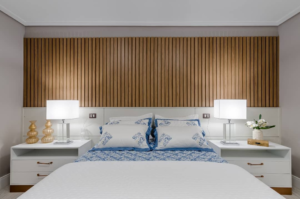
Kitchen: Functional and Efficient Design
A minimalist kitchen prioritizes function and organization, making meal prep efficient and enjoyable.
Practical Tips:
- Keep countertops free of appliances and clutter.
- Use dividers and organizers in cabinets and drawers.
- Opt for built-in appliances when possible.
- Choose multi-functional, high-quality kitchen tools.
- Use uniform containers for food storage.
- Prefer cabinets with doors to hide items and reduce visual noise.
- For open shelves, display only attractive, frequently used items.
- Use light colors to visually expand the space.
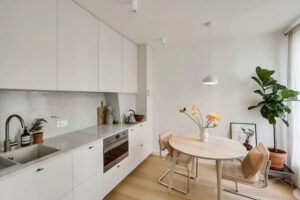
Bathroom: Simplicity and Elegance
A minimalist bathroom feels like a home spa, with impeccable organization and a clean look.
Practical Tips:
- Choose a monochromatic palette for tiles.
- Opt for a vanity with storage to conceal toiletries.
- Use organizers inside drawers and cabinets.
- Keep only daily essentials visible.
- Invest in quality neutral towels.
- Consider a clear glass shower to open up the space.
- Add one or two humidity-friendly plants.
- Pick matching accessories (towel racks, soap dishes) in similar finishes.
Home Office: Productivity and Focus
A minimalist home office cuts distractions, creating a space primed for concentration and productivity.
Practical Tips:
- Choose a simple desk with enough workspace.
- Opt for an ergonomic, comfortable chair.
- Manage cables with clips or channels.
- Use vertical organizers for documents.
- Keep only essentials on the desk.
- Create an efficient filing system.
- Place the desk near a window for natural light.
- Add a small plant to improve air quality.
Common Mistakes to Avoid in Minimalist Decor
It’s easy to slip up when implementing minimalist decor. Here are the most common mistakes and how to dodge them:
Creating a Cold, Impersonal Space
The Mistake: Many confuse minimalism with a total lack of personality, ending up with showroom-like or hotel-style spaces—pretty but soulless.
How to Avoid: Add elements that tell your story and reflect you. Simple-framed family photos, a beloved artwork, or travel keepsakes bring character without clutter.
Incorporate textures via rugs, pillows, or throws for warmth. Minimalism isn’t about stripping comfort or personality—just excess.

Forgetting Functionality and Practicality
The Mistake: Prioritizing looks over function, creating beautiful but impractical spaces.
How to Avoid: Ask, “Does this fit my lifestyle?” before choosing items. A gorgeous but uncomfortable sofa or a kitchen with no storage isn’t minimalist—function is king.
Tailor minimalism to your routine, not the other way around. A home should serve its residents, not just look good in photos.
Over-Discarding and Creating Gaps
The Mistake: In the rush to declutter, some toss out essentials or joy-bringing items.
How to Avoid: Minimalism isn’t about owning as little as possible—it’s about what’s ideal for you. Use Marie Kondo’s method: does it “spark joy” or serve a purpose?
Declutter gradually. Start with easy categories (duplicate clothes, unused items) before tackling tougher choices.
Buying New “Minimalist” Items
The Mistake: Ironically, some buy new “minimalist” pieces to replace what they have, fueling more consumption.
How to Avoid: True minimalist decor starts with what you own. Repaint or rearrange existing items before buying new.
When purchasing, choose versatile, durable, timeless pieces that won’t need replacing soon. Quality beats quantity every time.
Frequently Asked Questions About Minimalist Decor
Does minimalist decor work in homes with kids?
Yes! Minimalism can be especially helpful with kids. Fewer items mean less mess to manage and more play space. Use smart storage and teach kids to value quality over quantity. Multi-functional furniture and organizer bins that blend into the decor are key.
How much does it cost to switch to minimalist decor?
Costs vary, but minimalist decor often saves money long-term. You don’t need to buy anything to start—first, declutter. If upgrading, invest in a few quality pieces rather than cheap extras. Tackle one room at a time to spread costs, and repurpose what you have.
How do I apply minimalist decor in small apartments?
Small apartments are ideal for minimalist decor! Use multi-functional furniture (sofa beds, extendable tables), light colors to expand the space, vertical storage, and only essentials. Strategically placed mirrors boost the sense of space. Every item must earn its spot.
Can I keep collections with minimalist decor?
Absolutely! Minimalism doesn’t mean ditching what you love—it’s about intention. Make your collection a focal point, displayed purposefully and organized. Rotate pieces or dedicate a specific spot, keeping the rest of the space minimal.
How do I maintain minimalist decor long-term?
Consistency is key: adopt a “one in, one out” rule (for every new item, remove one); review belongings periodically; question every purchase; and use simple organization systems. Get everyone in the household on board and enjoy less cleaning, easier finding, and a calmer space.
Conclusion: Transform Your Home and Life with Minimalist Decor
Minimalist decor offers more than a sleek, modern look—it reshapes how you live and connect with your space and belongings.
By embracing minimalist principles, you create a more organized, visually harmonious home while reaping benefits like less stress, better productivity, time and money savings, and a deeper focus on what truly matters.
Minimalism isn’t about deprivation or rigid aesthetics—it’s about intention and prioritizing quality over quantity. Everyone’s “enough” is unique, and the goal is a space that reflects your values and supports your well-being.
Start your minimalist journey today! You don’t need to overhaul your home at once. Pick a small spot—a drawer, shelf, or corner—and apply what you’ve learned here.
Share your experience in the comments below or on social media with #MinimalistHome. We’d love to see your transformation and how minimalist decor is changing your life!
For more inspiration and practical tips, check out our free guide “7 Decorating Ideas” and kick off your makeover today.
